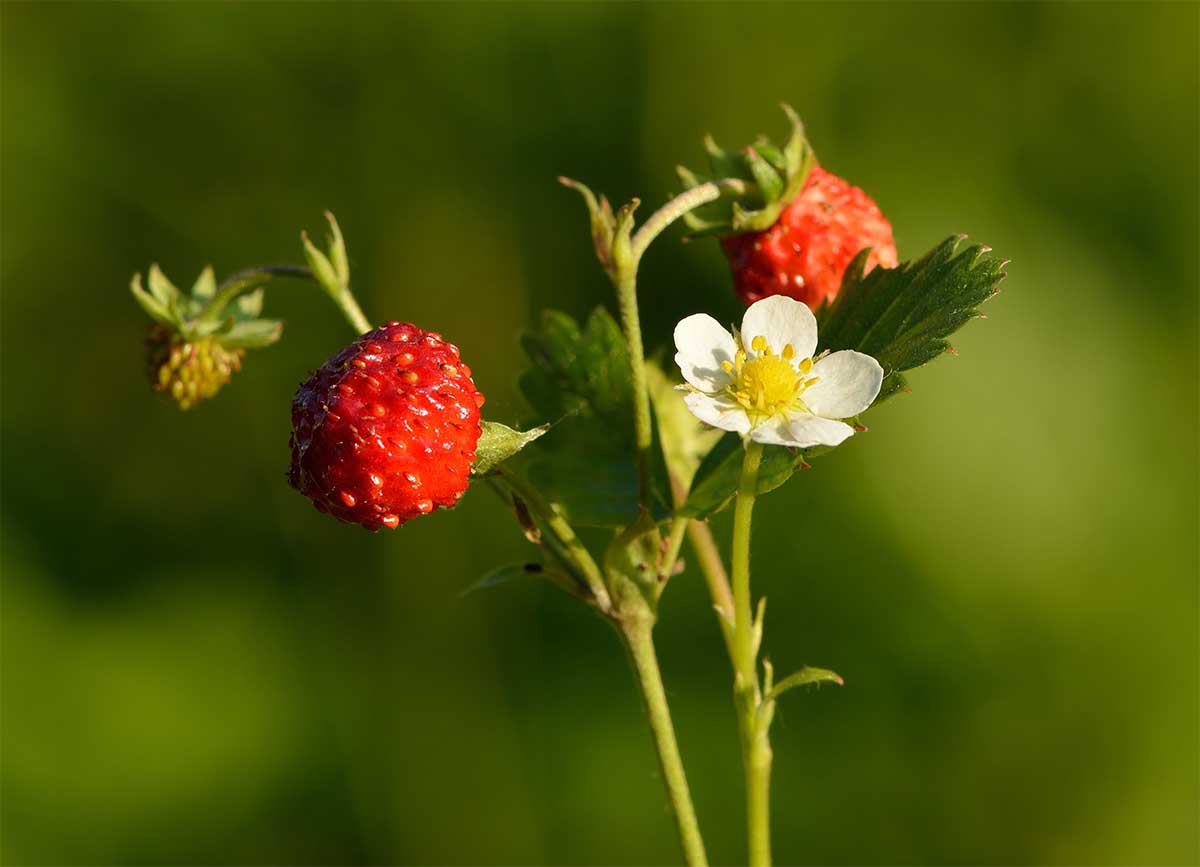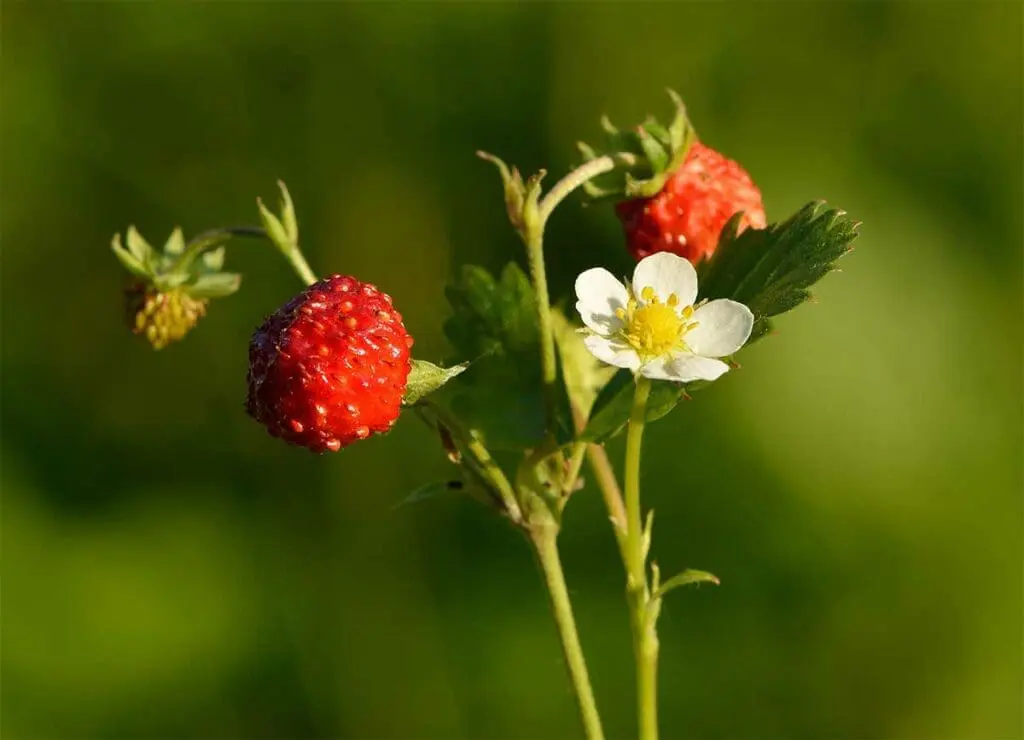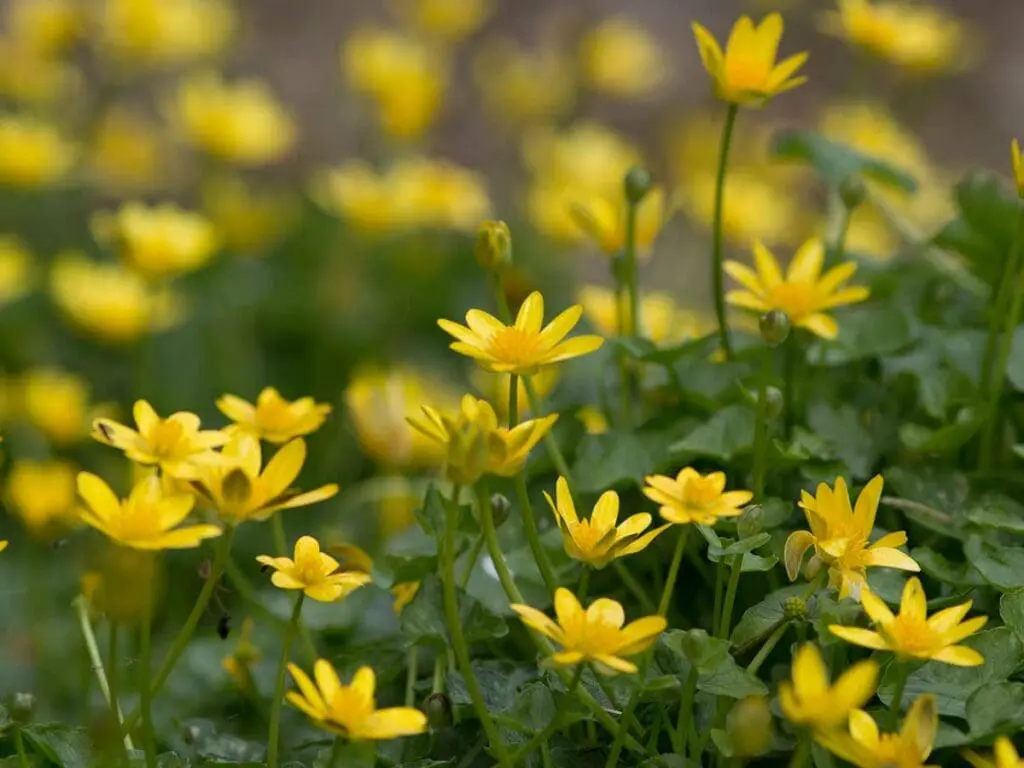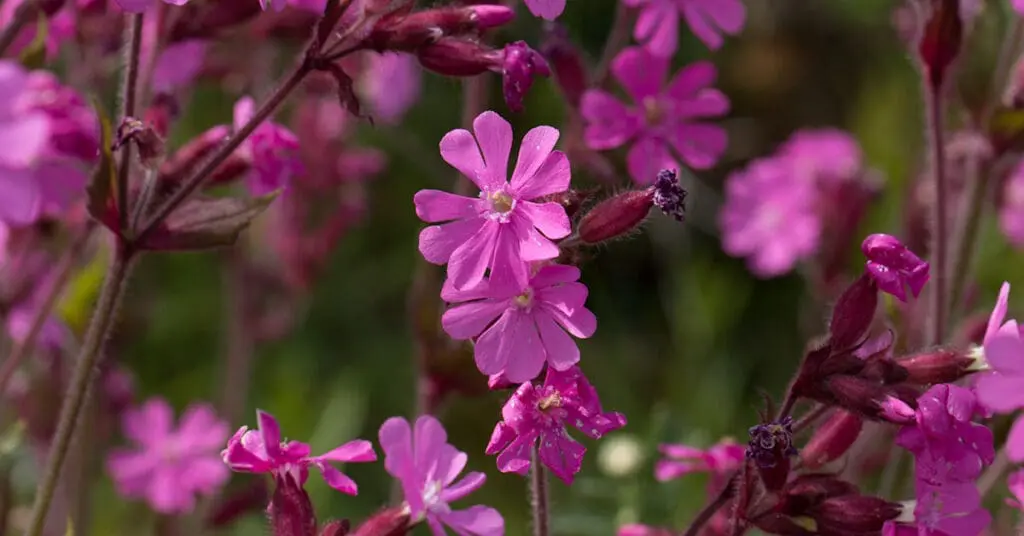- Scientific name: Fragaria vesca
- Family: Rose (Rosaceae)
- Found in: Woodland
Wild Strawberry is a member of the Rose family and closely related to the Blackberry and Raspberry. This perennial herb occurs naturally throughout the Northern Hemisphere and grows on woodland edges, hedgerow banks and grasslands where a little moisture and sunshine are present.
The name strawberry probably comes from the Anglo-Saxon ‘streowberie’, could derive from the runners with which the plant covers the ground. The word straw in Old English means ‘chaff’ – and refers to the small ‘achenes’ (the fruit) which cover the surface of the berry (what we think of as the actual strawberry fruit).
The Wild Strawberry was widely cultivated in Europe before being largely replaced by the Garden Strawberry (Fragaria ananassa), which has much larger berries. The garden strawberry is actually a hybrid between two species from the Americas and nothing to do with the Wild Strawberry. The fruit of Wild Strawberry is, though, strongly flavoured and still collected for domestic use and on a small scale commercially.
The Wild Strawberry not only bears delicious fruits but has also been used medicinally. The fruit is beneficial for the treatment of fever, rheumatism and gout. The fruit can apparently be used cosmetically to lighten freckles, soothe sunburn and whiten teeth. The leaves are used as a tea substitute and are a good source of vitamin C and generally aid the digestive process.
It reproduces by seed and spreads by long runners forming new independent plants wherever they touch the ground. The leaves grow on long stalks in a rosette from the base of the plant and comprise three leaflets, with serrated margins. The flowers are produced alone or in small clusters on flower stalks separate from the leaves. The flowers are white with 5 petals and appear from April to July. The fruits ripen from July onwards. Strawberries are eaten by birds which disperse the seeds.
An interesting fact mentioned briefly above, is that the strawberry ‘fruit’ is not a true fruit. Within the Rose family, there are a lot of individual female reproductive organs (termed carpels) in each flower. Each carpel consists of a stigma, style and ovary. All the carpels are inserted on to a fleshy receptacle. In Fragaria, the receptacle swells into the red-coloured ‘fruit’. Over its surface are small ‘seeds’, which are actually individual true fruits known botanically as achenes.
Propagation
Once planted, Wild Strawberry will spread quickly from runners if conditions are suitable, so you may not need to propagate them once established.
From seed
It is not difficult to grow Wild Strawberry from seed if you remember to freeze the seed for 3 to 4 weeks before sowing in early spring in a greenhouse. The seed can take 4 weeks or more to germinate. Another option is to sow the seed in the autumn. Prick out the seedlings into individual pots when they are large enough to handle and plant them out during the summer.
By division
Division, by detaching the runners, is preferably done in July/August in order to allow the plants to become established for the following year.





